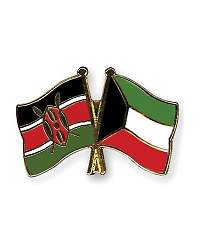By Ogova Ondego
Published June 20, 2013
 A policeman wept. A journalist collapsed with emotion too heavy to bear. Death, as usual, had visited a Kenyan ‘highway’ in the early afternoon, claiming 40 lives.Still trapped in the passenger seat of one of the matatu public service vehicles that had been involved in a multiple accident on the Nairobi-Nakuru road was the lifeless body of a young woman, her face bloody and raw. Clung to her chest was an equally lifeless baby. With personal effects and bodies strewn on the scene, one Nissan lay up-side down, its engine and wheels still running. Some motorists slowed down to stare at the scene no one wanted to remember; others just zoomed by, as if used to the average national death toll on Kenyan roads of 13 persons per day and the annual injuries of about 20,000.
A policeman wept. A journalist collapsed with emotion too heavy to bear. Death, as usual, had visited a Kenyan ‘highway’ in the early afternoon, claiming 40 lives.Still trapped in the passenger seat of one of the matatu public service vehicles that had been involved in a multiple accident on the Nairobi-Nakuru road was the lifeless body of a young woman, her face bloody and raw. Clung to her chest was an equally lifeless baby. With personal effects and bodies strewn on the scene, one Nissan lay up-side down, its engine and wheels still running. Some motorists slowed down to stare at the scene no one wanted to remember; others just zoomed by, as if used to the average national death toll on Kenyan roads of 13 persons per day and the annual injuries of about 20,000.
By the turn of the 20th century, International Federation of Red Cross and Red Crescent Societies (IFRCRCS) ranked motor accidents as the ninth biggest killer in the world; that it destroyed a million people and injured 15 million more each year. IFRCRCS predicted that traffic accidents would be the third biggest cause of death by 2020; that traffic accidents would be ahead of AIDS, respiratory infections, tuberculosis and war.
In a century since the first pedestrian died in an automobile accident in 1898 according to IFRCRCS’s World Disasters Report 1998 report, more than 30 million people had perished in motor accidents—like the one described above—by 1998.
RELATED: High Airline Accident Rate in Africa Still a Concern
Comparing motor vehicle accidents with the then much dreaded AIDS, IFRCRCS said both were a leading killer for men and a fifth cause of death for women aged between 15 and 44 years.
Although the developing world (the South) has fewer vehicles than its industrialised counterpart (the North), IFRCRCS lamented that the latter had fewer traffic accidents (30%) than the former whose 70% rate was going up due to neglect of driver training, safety campaigns, vehicle and road care.
IFRCRCS estimated in 1998 that accidents cost Kenya between US$55 million and US$70 million annually although other researchers put the loss at twice that conservative figure. Kenya, which ranked among the top six countries in the world with the highest rate of road accidents, also had the highest number of traffic accidents among developing countries.
Two years earlier, in 1996, Institute of Economic Affairs had estimated that road accidents cost Kenya about US$163 million (US$50 million in material damage, US$75 million in lost human resource and a further US$37.5 million in courts and hospitals) annually.
 Many people appeared dumbfounded when President Daniel arap Moi declared not the escalating road carnage but HIV/Aids a national disaster and announced emergency measures to curb its spread in November 1999. The President had gone ahead to order the immediate establishment of the National Aids Control Council “with sufficient powers to take on leadership in the coordination of a multi-sectoral Aids control programme in all sectors”.
Many people appeared dumbfounded when President Daniel arap Moi declared not the escalating road carnage but HIV/Aids a national disaster and announced emergency measures to curb its spread in November 1999. The President had gone ahead to order the immediate establishment of the National Aids Control Council “with sufficient powers to take on leadership in the coordination of a multi-sectoral Aids control programme in all sectors”.
RELATED: Kenya Tourism Federation Chief Elected to East African Business Council Board
The President announced that, in order to prepare children to face the challenges posed by the scourge, Aids education will be introduced in all schools and colleges from January 2000.
“Accidents have become so common that it is rare to travel on our roads without ever encountering one yourself or seeing vehicles which have been involved in an accident,” said Johnson Wafula, a printer who lamented that a ghastly accident is usually followed with national public outcries and calls for the installation of black boxes and speed governors in public service motor vehicles but that these concerns are soon forgotten only to reappear following another accident.
It was not until 2003 when Kenya’s new Transport and Communications Minister, John Njoroge Michuki, sought a strict enforcement of the Transport Licensing Act (Chapter 404 of the Laws of Kenya) in order to curb the spiralling road carnage.
All PSVs had to be fitted with speed governors and safety seat belts and the drivers and conductors had to have certificates of good conduct to ensure no one with a criminal record was on the road. Moreover, the matatu crew were to wear uniforms and display their pictures in the vehicle as a further measure of discipline. This was a shot in the arm of the Transport Licensing Board (TLB) regulations that had been introduced under great hype in 1998 to help end road carnage but that had been more ornamental than anything else.
RELATED: Why Hefty Salary Increment for Kenyan Parliamentarians is Unjustified
“The government should come up with a working time-table on when to end these senseless murder and killings on our roads. Good intentions alone without action are not enough,” Wafula had said. “Workshops and seminars on road safety alone will not end this frightening nightmare. There are so many people I know who have shunned travelling to their rural homes for fear of getting killed ‘on the roads.”
The ‘Michuki Rules’, that had come into effect in February 2004, appeared to work till he exited the ministry in 2005. For instance, deaths arising from road accidents in 2004 declined to 2,251 from the annual average of 3,000. Some 3004 people had lost their lives in 2003.
Matatu PSVs in Kenya went on strike in November 2012 over the country’s Traffic Amendment Act 2012 that, among others, stipulates that any one found drinking and driving risks being fined US$6,250 or 10 years in jail or both; causing death by careless driving is punishable by life imprisonment; overlap, obstruction, or driving on pavement to avoid traffic earns the offender a fine of between US$1,250 and US$3,750 or a year in jail or both. Moreover, every police officer and not just those in the traffic department, was given the power to arrest any traffic offender. But selective application of this law appears to have made it impotent as motor accidents escalate: 4457 people killed in 2012, up from 2760 in 2011.
RELATED: World Travel Awards unveils Africa Nominees for 2013
This data alarmed the TLB that regulates PSVs in Kenya into calling for fresh road tests for all drivers in the country in November 2011. It called for the overhaul of the training curriculum and the criteria used in testing drivers in the country, arguing that more than half of all drivers on Kenyan roads were unqualified. The then chair of TLB, Hassan ole Kamwaro, said, “There are far too many fake road licenses, driving licenses, TLB certificates, insurance certificates and even good conduct certificates. Majority of our drivers are terrible.”
The World Disasters Report says “engineering–from car design to streetlights–is more effective than efforts to change driver behaviour. Engineering and planning can make human error less likely.”
 The report calls for the highlighting of accident ‘black spots’, removal of roadside objects, separation of different traffic types and shifting from junctions to roundabouts as some of the measures for eliminating road carnage in Kenya.
The report calls for the highlighting of accident ‘black spots’, removal of roadside objects, separation of different traffic types and shifting from junctions to roundabouts as some of the measures for eliminating road carnage in Kenya.
Implementing the above recommendations, experts say, would cost Kenya less than the estimated US$163 million lost annually in automobile accidents.




